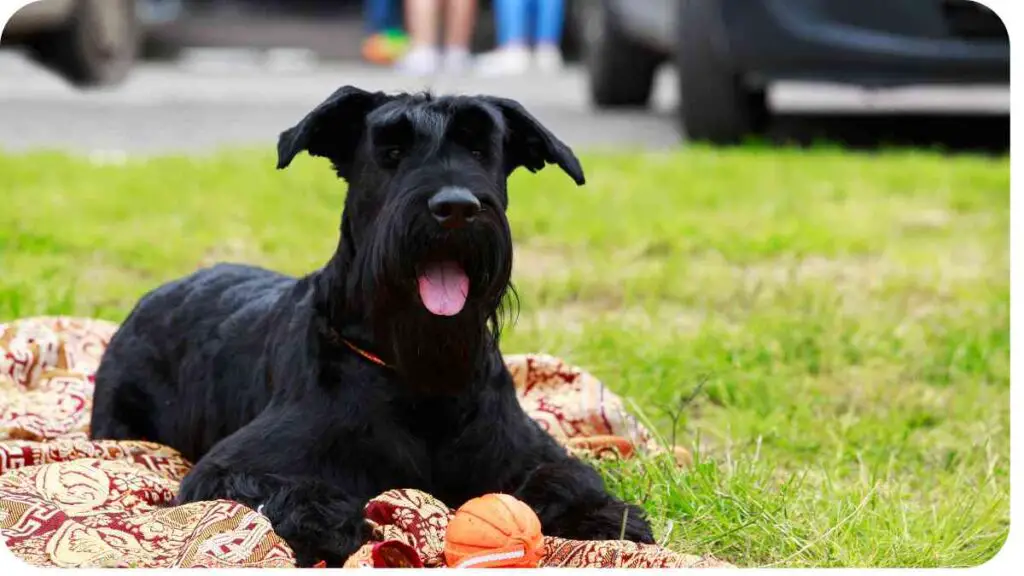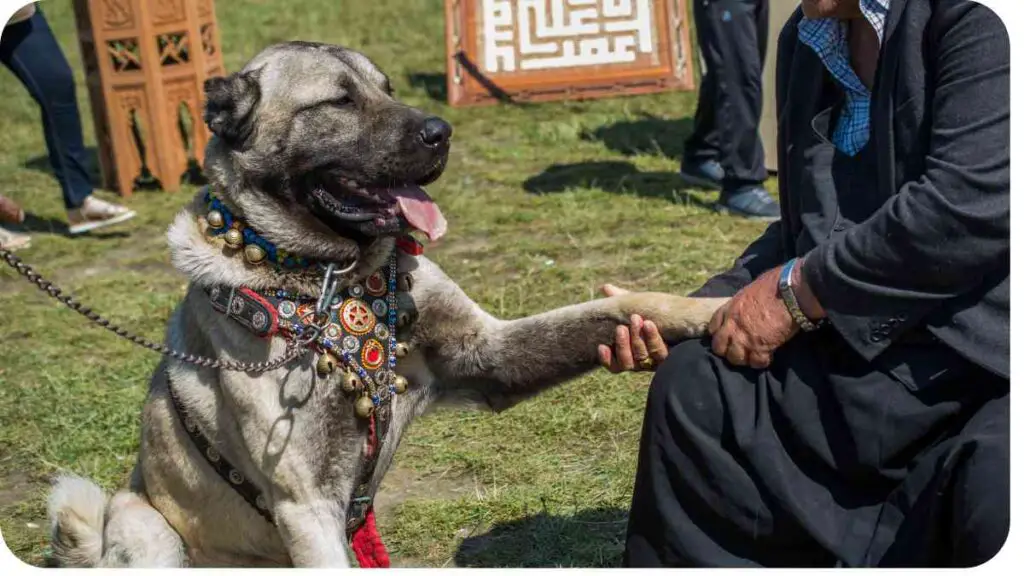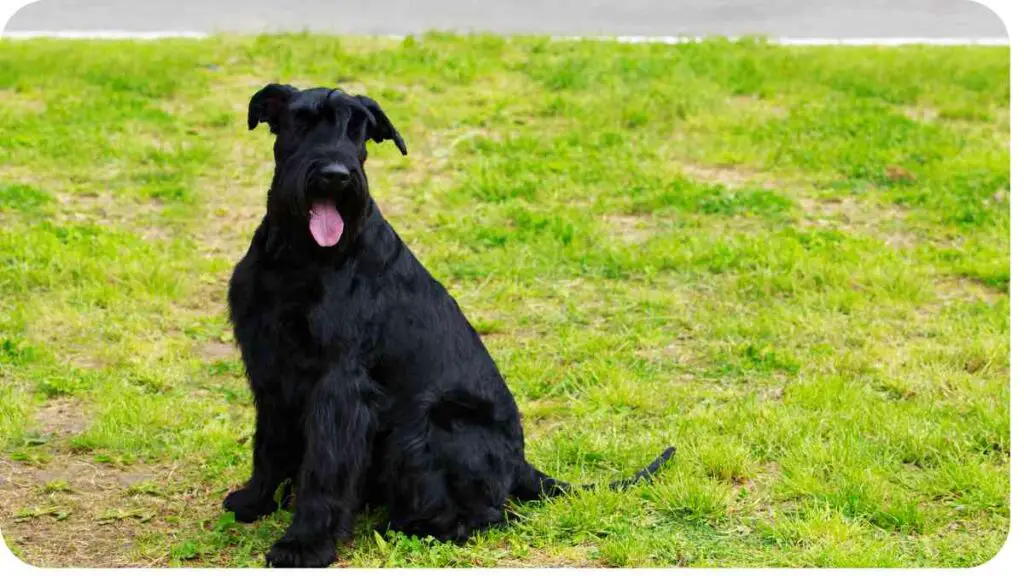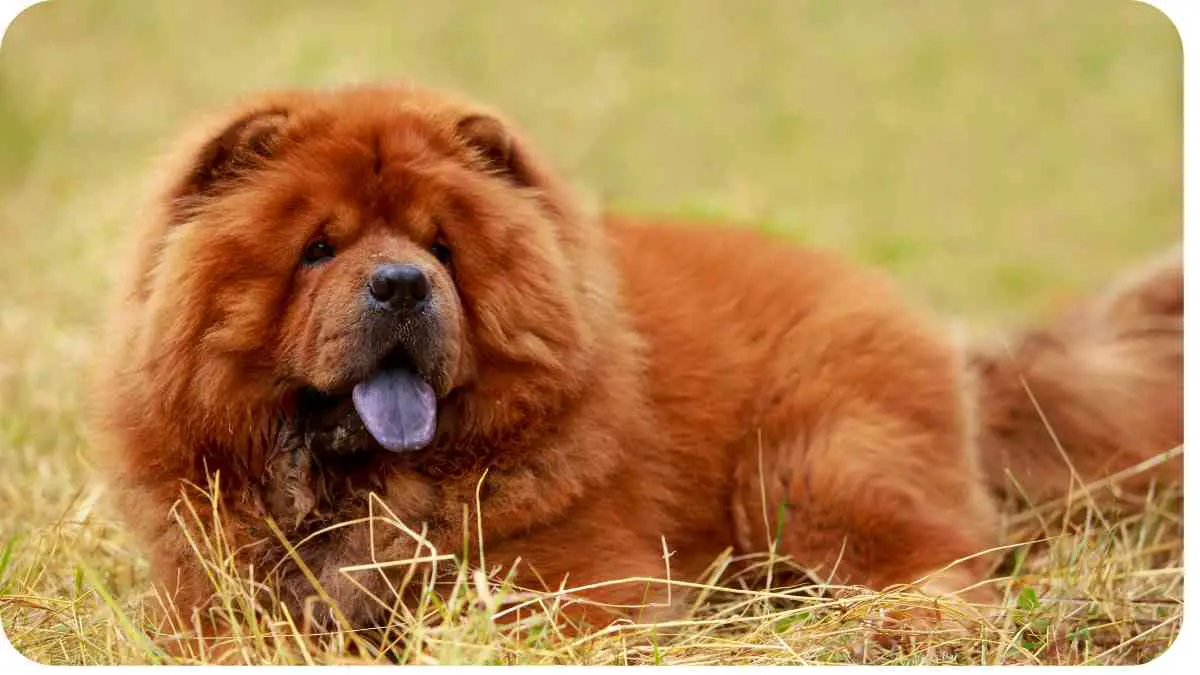Giant dog breeds capture the hearts of many dog lovers with their imposing stature and gentle demeanor. In this guide, we’ll delve into the world of massive canines, exploring their characteristics, health considerations, and tips for proper care.
Whether you’re considering adding a giant breed to your family or simply intrigued by these majestic creatures, this article will provide valuable insights into their world.
| Key Takeaways |
|---|
| 1. Giant dog breeds require special care and attention due to their size and unique needs. |
| 2. Proper nutrition, regular exercise, and veterinary care are essential for maintaining the health and well-being of giant breeds. |
| 3. Despite their imposing stature, giant breeds often have gentle and affectionate temperaments, making them wonderful companions for families. |
| 4. Socialization and training from an early age are crucial for ensuring that giant breeds develop good manners and behavior. |
| 5. While giant breeds may have shorter lifespans compared to smaller breeds, providing a loving and nurturing environment can help maximize their quality of life. |
Understanding Giant Dog Breeds

Giant dog breeds, also known as large or giant breeds, typically weigh over 100 pounds and stand at least 24 inches tall at the shoulder. These breeds often possess a gentle and affectionate nature, despite their intimidating size. However, their large stature requires careful consideration in terms of diet, exercise, and healthcare.
In understanding large breeds, “Comparing Boerboels and Rottweilers” sheds light on their unique characteristics and temperaments, aiding in informed decisions when selecting a loyal companion.” comprehensive guide
Factors Contributing to Size
Genetic Influences
Genetics play a significant role in determining the size of a dog breed. Breeds bred for specific purposes, such as guarding or pulling sleds, tend to be larger to fulfill their respective roles effectively. For example, the Saint Bernard was originally bred for rescue work in the Swiss Alps, necessitating a robust and massive build.
Nutrition and Diet
Proper nutrition is crucial for the healthy development of giant dog breeds. A balanced diet that meets their unique nutritional needs is essential to support their growth and maintain optimal health. Additionally, overfeeding or feeding an inappropriate diet can contribute to obesity, exacerbating health issues such as joint problems and heart disease.
| Nutritional Considerations for Giant Breeds |
|---|
| – High-quality, protein-rich diet |
| – Controlled portion sizes |
| – Avoidance of excessive treats |
| – Consultation with a veterinarian for dietary recommendations |
Health Considerations for Large Breeds
Despite their gentle nature, giant dog breeds are prone to certain health issues due to their size and weight. It’s essential for owners to be aware of these potential concerns and take proactive measures to ensure their pet’s well-being.
For those seeking formidable protectors, “Ranking the Top Guard Dog Breeds” offers insights into breeds renowned for their size, strength, and protective instincts, ensuring a secure home environment.” home protection
Orthopedic Issues
One of the most common health issues affecting giant breeds is orthopedic problems, including hip dysplasia and osteoarthritis. These conditions can cause pain and mobility issues, significantly impacting the dog’s quality of life. Proper nutrition, weight management, and regular exercise can help mitigate the risk of orthopedic issues.
Heart Conditions
Giant breeds are also predisposed to certain heart conditions, such as dilated cardiomyopathy (DCM) and aortic stenosis. Regular veterinary check-ups and diagnostic testing can help detect these conditions early, allowing for prompt intervention and management.
Lifespan Expectancy
Despite their size, giant dog breeds tend to have shorter lifespans compared to smaller breeds. While genetics play a role in determining lifespan, proper healthcare and lifestyle choices can influence longevity. Providing a nutritious diet, regular exercise, and routine veterinary care can help maximize a giant breed’s lifespan.
| Lifespan Expectancy of Giant Breeds |
|---|
| – Average lifespan: 8-12 years |
| – Factors influencing lifespan: |
| – Genetics |
| – Diet and nutrition |
| – Healthcare |
| – Exercise and activity levels |
Popular Giant Dog Breeds

Several breeds fall into the category of giant dogs, each with its own unique characteristics and temperament. Let’s explore some of the most popular giant breeds beloved by dog enthusiasts worldwide.
While focusing on larger breeds, “Exploring the Ancient and Unique Basenji Dog Breed” introduces a captivating contrast, showcasing the diverse spectrum of canine companionship beyond sheer size.” Basenji dog breed
Great Dane
The Great Dane, often referred to as the “gentle giant,” is renowned for its imposing size and friendly demeanor. Despite their massive stature, Great Danes are known for their affectionate nature and gentle temperament, making them excellent family pets.
| Characteristics of Great Danes |
|---|
| – Height: 28-34 inches (at shoulder) |
| – Weight: 110-175 pounds |
| – Temperament: Gentle, affectionate |
| – Exercise Needs: Moderate |
Saint Bernard
The Saint Bernard is famous for its role as a rescue dog in the Swiss Alps, where it assisted travelers lost in the snow. Today, these gentle giants are cherished for their loyalty, patience, and affectionate nature.
| Characteristics of Saint Bernards |
|---|
| – Height: 26-30 inches (at shoulder) |
| – Weight: 120-180 pounds |
| – Temperament: Gentle, patient |
| – Exercise Needs: Moderate |
Newfoundland
The Newfoundland, often dubbed as the “gentle giant of the canine world,” is renowned for its sweet disposition and protective nature. Originating from Newfoundland, Canada, these massive dogs were historically used for water rescue due to their strong swimming abilities and innate lifesaving instincts.
| Characteristics of Newfoundlands |
|---|
| – Height: 26-28 inches (at shoulder) |
| – Weight: 100-150 pounds |
| – Temperament: Sweet, protective |
| – Exercise Needs: Moderate to high |
English Mastiff
The English Mastiff, known for its massive size and dignified presence, has a history dating back to ancient times. Bred as guardians and protectors, these gentle giants are loyal companions with a calm and steady temperament.
Energetic and sizable, the “Australian Shepherd Golden Retriever Hybrid” embodies the best of both breeds, making it a compelling choice for those seeking a dynamic and affectionate companion.” hybrid breed
| Characteristics of English Mastiffs |
|---|
| – Height: 27.5-32 inches (at shoulder) |
| – Weight: 160-230 pounds |
| – Temperament: Calm, loyal |
| – Exercise Needs: Moderate |
Tibetan Mastiff
Originating from the Himalayan region of Tibet, the Tibetan Mastiff is revered for its imposing size and protective instincts. These majestic dogs have a strong sense of loyalty and make formidable guardians of their family and home.
| Characteristics of Tibetan Mastiffs |
|---|
| – Height: 24-26 inches (at shoulder) |
| – Weight: 70-150 pounds |
| – Temperament: Protective, independent |
| – Exercise Needs: Moderate to high |
Irish Wolfhound
The Irish Wolfhound, steeped in Celtic history and mythology, is one of the tallest dog breeds in existence. Despite their imposing stature, these gentle giants are known for their noble and affectionate nature, making them cherished companions.
| Characteristics of Irish Wolfhounds |
|---|
| – Height: 30-32 inches (at shoulder) |
| – Weight: 105-180 pounds |
| – Temperament: Gentle, noble |
| – Exercise Needs: Moderate to high |
Characteristics of Giant Breeds

Temperament
Despite their intimidating size, giant breeds often have gentle and affectionate temperaments. Many of these dogs are known for their calm and patient demeanor, making them suitable companions for families and individuals alike.
Exercise Needs
While giant breeds may require ample space to roam and play, their exercise needs can vary depending on factors such as age, health, and breed. Regular exercise is essential to keep these dogs mentally stimulated and physically fit, but it’s crucial to avoid overexertion, especially in puppies and seniors.
Living Space Requirements
Owning a giant breed comes with unique considerations, including adequate living space. These dogs thrive in homes with ample room to move around freely, both indoors and outdoors. A fenced yard provides a safe environment for exercise and play, allowing these majestic creatures to stretch their legs and enjoy the outdoors.
Tips for Caring for Giant Dogs
Caring for a giant breed requires careful attention to their unique needs and requirements. Here are some essential tips to ensure the health and well-being of your large canine companion:
Proper Nutrition
A balanced diet tailored to your dog’s size, age, and activity level is essential for maintaining optimal health. Choose high-quality dog food formulated for large breeds and avoid overfeeding, which can contribute to obesity and related health issues.
Regular Exercise
Provide daily exercise to keep your giant dog mentally stimulated and physically fit. Activities such as brisk walks, playtime in the yard, and interactive games can help prevent boredom and promote bonding between you and your pet.
Veterinary Care
Regular veterinary check-ups are crucial for monitoring your dog’s health and detecting any potential issues early. Keep up with vaccinations, parasite prevention, and dental care to ensure your dog remains healthy and happy.
Training and Socialization
Start training and socializing your giant breed puppy from an early age to instill good manners and prevent behavioral problems. Positive reinforcement techniques, consistency, and patience are key to helping your dog become a well-behaved member of the family.
Common Misconceptions About Large Breeds
Despite their popularity, giant dog breeds are often subject to misconceptions and stereotypes. Let’s debunk some common myths surrounding these majestic canines:
Aggressiveness
Contrary to popular belief, giant breeds are not inherently aggressive. With proper socialization, training, and responsible ownership, these dogs can be gentle and affectionate companions.
High Exercise Needs
While giant breeds do require regular exercise to stay healthy, they don’t necessarily need excessive amounts of physical activity. Moderate exercise tailored to their age and abilities is sufficient to keep them happy and content.
Short Lifespan
While it’s true that giant breeds tend to have shorter lifespans compared to smaller breeds, proper care and attention can help maximize their longevity. Providing a healthy diet, regular exercise, and routine veterinary care can significantly impact a giant breed’s quality of life and lifespan.
Conclusion
Giant dog breeds hold a special place in the hearts of dog enthusiasts worldwide, thanks to their imposing stature, gentle demeanor, and unwavering loyalty. By understanding their unique needs and providing them with proper care and attention, owners can ensure these majestic creatures live happy, healthy lives as cherished members of the family.
Whether you’re considering adding a giant breed to your family or simply fascinated by these majestic canines, the key to successful ownership lies in knowledge, commitment, and love.
Further Reading
For more information on giant dog breeds, check out these resources:
- Good Housekeeping: Largest Dog Breeds
- Explore a comprehensive list of the largest dog breeds, including information on their size, temperament, and care requirements.
- Basepaws: Size Matters – Discovering the Biggest Dog Breed in the World
- Learn about the largest dog breed in the world and what sets them apart from other breeds in terms of size, history, and characteristics.
- Science Focus: Biggest Dog Breeds
- Discover fascinating facts about some of the biggest dog breeds on the planet, including insights into their genetics, behavior, and evolutionary history.
FAQs
Are giant dog breeds suitable for apartment living?
Giant breeds require ample space to move around and thrive, making apartment living less than ideal. However, with sufficient exercise and mental stimulation, some giant breeds can adapt to apartment life, provided they have access to outdoor space for exercise and play.
Do giant dog breeds have specific dietary requirements?
Yes, giant breeds have unique nutritional needs due to their size and growth rate. It’s essential to feed them a balanced diet formulated for large breeds to support their bone and muscle development while preventing obesity and related health issues.
Are giant breeds good with children and other pets?
Many giant breeds are known for their gentle and tolerant nature, making them excellent companions for children and other pets. However, proper socialization and supervision are essential to ensure positive interactions and prevent accidents due to their size and strength.
What are some common health issues in giant dog breeds?
Giant breeds are prone to certain health issues, including orthopedic problems like hip dysplasia, heart conditions such as dilated cardiomyopathy, and shorter lifespans compared to smaller breeds. Regular veterinary check-ups and preventive care are crucial for maintaining their health and well-being.
How much exercise do giant dog breeds require?
While giant breeds do require regular exercise to stay healthy, they don’t necessarily need excessive amounts of physical activity. Moderate exercise tailored to their age and abilities is sufficient to keep them happy and content, although specific exercise needs may vary depending on the breed and individual dog.

I’m Dr. Hellen James, I’ve spent my career working with dogs, and I’ve seen first-hand how important it is to understand the individual needs of each breed. I want to share my knowledge of dog breeds with you so that you can make informed decisions about which dog will be best for your household and lifestyle.

